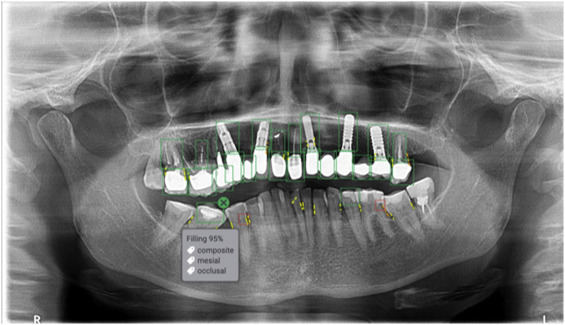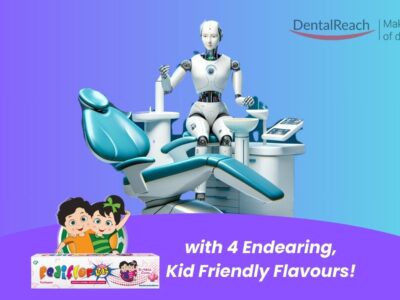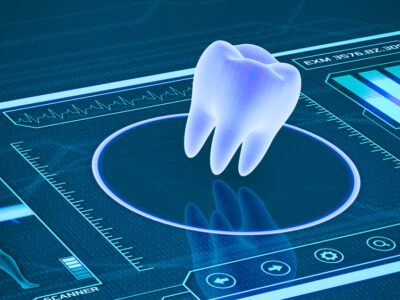Introduction
The field of dentistry has witnessed remarkable advancements over the years, with technology playing a pivotal role in transforming oral healthcare practices. One of the most promising technological advancements is the integration of artificial intelligence (AI) into oral diagnosis. AI-powered systems have the potential to enhance accuracy, efficiency, and effectiveness in detecting and diagnosing oral diseases.
By leveraging machine learning algorithms, image recognition, and data analysis, AI is revolutionizing the way oral healthcare professionals diagnose and treat various dental conditions. This article explores the applications, benefits, and challenges of oral diagnosis through artificial intelligence, supported by relevant sources from scientific and dental literature.
Applications of AI in Oral Diagnosis
- Image Analysis and Recognition
AI algorithms can analyse dental images, such as X- rays, panoramic radiographs, and intraoral photographs, to identify and classify dental conditions accurately. This enables dentists to detect caries, periodontal diseases, oral cancers, and other abnormalities with greater precision.
- Risk Assessment and Prevention
AI can assess patients’ risk factors for developing oral diseases by analysing their medical records, lifestyle habits, and genetic information. This allows for personalized preventive measures, enabling dentists to intervene early and provide targeted treatments.
- AI for Oral Cancer Detection
Oral cancer is a significant global health concern. AI- based systems have shown promise in aiding the detection and diagnosis of oral cancer. Researchers at the National Institute of Dental and Craniofacial Research (NIDCR) in the United States developed an AI algorithm that achieved 93% accuracy in detecting oral cancer by analysing oral pathology images.
- CAD/CAM Technology
Computer-aided design and computer-aided manufacturing (CAD/CAM) technology, often integrated with AI, has revolutionized the field of dentistry. CAD/CAM systems enable the creation of precise dental restorations, such as crowns and bridges, by using AI algorithms to analyse digital impressions and generate custom designs.
- Virtual Dental Assistants
AI-powered virtual dental assistants can enhance the efficiency of dental practices by automating administrative tasks, managing appointments, and providing patient education. These assistants utilize natural language processing and machine learning algorithms to interact with patients, answer questions, and provide personalized oral health recommendations.
- Detection of Periodontal Diseases
Periodontal diseases, including gingivitis and periodontitis, can lead to tooth loss if not diagnosed and treated promptly. AI algorithms have been developed to analyse patient data, including periodontal charts, clinical parameters, and risk factors, to assist in the early detection and monitoring of periodontal diseases.
- AI for Dental Caries Detection
Dental caries is a prevalent oral disease. AI algorithms have been developed to assist in the detection and diagnosis of dental caries. These algorithms analyse dental images and employ machine learning techniques to identify and classify carious lesions accurately.
- AI for Orthodontic Diagnosis
Orthodontic treatment involves the correction of misaligned teeth and jaws. AI has been utilized to aid in orthodontic diagnosis by analysing cephalometric X-rays, dental models, and facial photographs. AI algorithms can provide valuable insights, assist in treatment planning, and predict the outcome of orthodontic interventions.
- AI for Temporomandibular Disorders (TMD)
Temporomandibular disorders refer to conditions affecting the jaw joint and surrounding muscles. AI systems can analyse clinical data, radiographic images, and patient-reported symptoms to aid in the diagnosis and management of TMD. These systems help identify patterns and provide evidence-based recommendations for treatment.
- AI for Oral Pathology Analysis
AI algorithms have been employed to analyse histopathological slides and aid in the diagnosis of various oral pathologies, including oral leukoplakia, oral squamous cell carcinoma, and oral potentially malignant disorders. These systems enhance diagnostic accuracy and assist pathologists in making informed decisions.
- Teledentistry and AI
Teledentistry, which combines remote dental care with AI- driven technologies, has gained prominence, particularly during the COVID-19 pandemic. AI-powered image analysis allows dentists to remotely examine oral images and provide diagnosis and treatment recommendations, improving access to oral healthcare, especially in underserved areas.
- Decision Support Systems
AI-powered decision support systems assist dentists in diagnosing complex cases. By analysing patient data and comparing it with vast databases, these systems can provide evidence-based recommendations for treatment planning, prosthetic design, and orthodontic treatment.
- Voice Recognition and Natural Language Processing
AI-driven voice recognition technology aids in patient interaction and record-keeping, improving efficiency and accuracy in diagnosing and documenting dental conditions. Natural language processing algorithms help extract relevant information from clinical notes and integrate it into diagnostic processes.
Benefits of AI in Oral Diagnosis
- Enhanced Accuracy and Efficiency
AI algorithms can process vast amounts of data and images, significantly improving diagnostic accuracy and reducing human error. Dentists can benefit from AI’s ability to analyse complex patterns and detect subtle abnormalities that may be overlooked by human eyes.
- Early Detection and Intervention
AI systems enable early detection of oral diseases, leading to timely intervention and improved treatment outcomes. By identifying pre- cancerous lesions, periodontal diseases, or decay at early stages, AI facilitates preventive measures and minimizes the need for invasive procedures.
- Objective and Consistent Diagnoses
AI provides a standardized approach to diagnosis, minimizing subjective variations between dental practitioners. This consistency allows for better communication, collaboration, and improved quality of care across different dental clinics.
Challenges and Limitations
- Data Quality and Privacy
AI models heavily rely on large and diverse datasets for training and validation. Ensuring the quality, accuracy, and privacy of dental data is crucial for developing reliable AI systems. Ethical concerns regarding patient privacy and data protection must be addressed.
- Algorithm Bias and Generalization
AI algorithms can be susceptible to bias if trained on imbalanced or limited datasets. Efforts should be made to train algorithms on diverse populations to avoid biased results. Generalization of AI models across different ethnicities and demographics remains a challenge.
- Human-AI Collaboration
While AI can augment diagnostic capabilities, it should be seen as a tool to support human decision-making, rather than a replacement for clinical expertise. Proper training and education are necessary to enable dental professionals to effectively utilize AI technology.
Conclusion
Artificial intelligence is reshaping the landscape of oral diagnosis, empowering dental professionals with advanced tools to provide accurate and efficient dental care. By harnessing the power of AI in image analysis, risk assessment, decision support systems, and natural language processing, oral healthcare is poised to reach new heights of accuracy and effectiveness.
While challenges such as data quality, bias, and human-AI collaboration persist, ongoing research and collaboration between dental professionals and AI experts hold the key to overcoming these obstacles. With further advancements and adoption, AI has the potential to revolutionize oral diagnosis and improve oral health outcomes worldwide.
References
- Estai, M., Kanagasingam, Y., Huang, B., & Shiikha, S. (2018). Artificial intelligence in oral medicine: A scoping review. Journal of Clinical Medicine.
- Petruzzi, M., Lucchese, A., Laino, L., & Lauritano, F. (2020). Artificial intelligence in oral medicine: A review of recent literature. Oral Diseases.
- Mourya, M., Sood, S., & Yadav, S. (2018). Artificial intelligence in oral cancer diagnosis: A systematic review. Journal of Oral and Maxillofacial Pathology.
- Schwendicke, F., Krois, J., & Bucker, A. (2019). Artificial intelligence in dentistry: Chances and challenges. Journal of Dental Research.
- Barngkgei, I., Eckert, G. J., Abdallah, E. F., Ghoneima, A. A., & Rossouw, P. E. (2020). Applications of artificial intelligence in orthodontics: A review and bibliometric analysis. Orthodontics & Craniofacial Research.
- Napora, K. J., & Cappellette, M. (2021). Artificial intelligence in oral pathology. Surgical Pathology Clinics.

















Comments